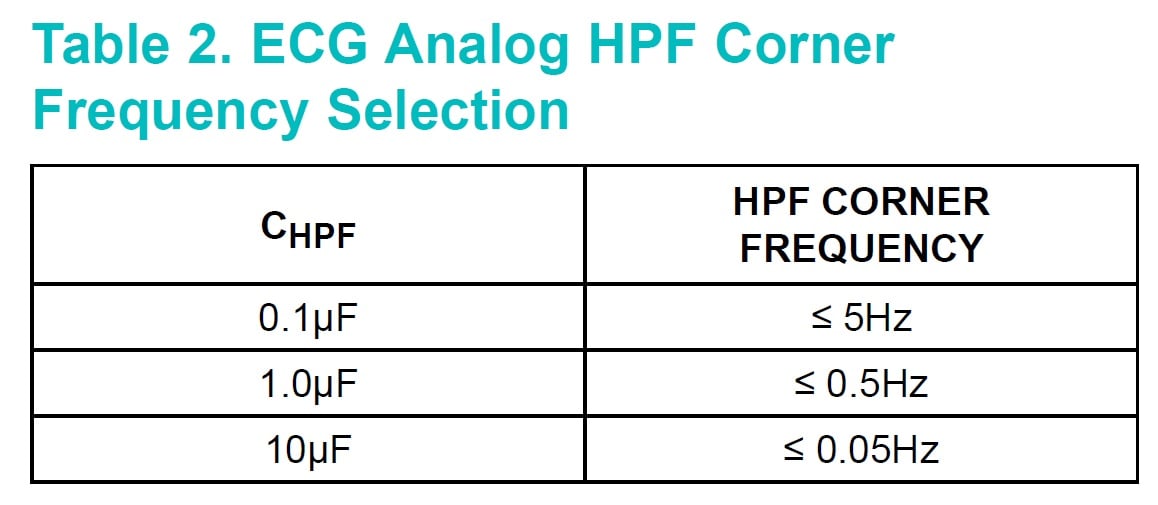Maxim Integrated offers their new low-power and high-performance IC for bio measurements.
The MAX30001 IC, from Maxim Integrated,
serves as a complete analog front-end (AFE) solution for performing
biopotential and bioimpedance measurements for clinical and fitness
applications.What, you might be asking, are biopotential and bioimpedance measurements? Well, according to the datasheet, the MAX30001's biopotential channel provides electrocardiogram (ECG) waveforms, senses heart rate, and can detect pacemaker edges, while the bioimpedance channel measures respiration. It all sounds like magic to me! Equally impressive is the IC's very-small package—actually, there are two package options.
Two Very Small Package Options
Depending on your design's requirements, when using the MAX30001 biosensor, you have two package types to choose from. One is a 28-pin 5mm × 5mm TQFN (thin quad flat no-leads) package; this package is better suited for those who might need to do some hand placement or manual soldering (such as with a hot-air gun), or those who simply don’t want to deal with a wafer-level package (WLP)... which is the other available packaging option. The 30-pin wafer-level package (2.7mm × 2.7mm) is meant for space-constrained applications. The image below show the pinouts and dimensions of these two package types.
Figure 1. Pinout and package dimensions of the two available package types (TQFN and WLP). Diagrams taken from the datasheet (PDF).
The datasheet also provides additional package and footprint (land pattern) information, and Maxim has kindly provided hyperlinks to their latest package and layout drawings (see image below).

Figure 2. Additional package and footprint information, from the datasheet (PDF).
For a tip on how to protect a WLP device from “accidental removal,” read the section entitled Wafer-Level Package Information in our article discussing the MAX16140.
Recommended Filtering Options
When using the MAX30001 biosensor, you don't need to worry about connecting an external signal amplifier or implementing filters, because (as they should be) these critical components are included in this AFE solution. As explained in the datasheet, this IC's ECG channel includes a low-noise fixed-gain instrumentation amplifier that rejects common-mode AC interference as well as differential DC voltage caused by electrode polarization.The user can set, by means of a single external capacitor, the corner frequency for the DC rejection filter. Maxim recommends the following three corner frequency options:
- 5Hz is recommended for heart rate monitoring applications. This setting provides superior rejection of motion artifacts at the expense of high-quality ECG waveforms.
- 0.5Hz is chosen for applications where robust ECG waveforms are required and moderate motion-artifact rejection is acceptable.
- 0.05Hz should be used when optimal ECG waveform quality is desired.

Figure 3. Recommended capacitor values for setting the high-pass filter corner frequency. Table taken from the datasheet (PDF).
Low Power
The MAX30001 is advertised as being an ultra-low-power device, and this indeed appears to be the case according to the Electrical Characteristics table given in the datasheet (see image below). The lowest operational current/power consumption occurs when voltages VAVDD and VDVDD are both connected to 1.1V and when only the ECG functionality is utilized. Under these conditions, a mere 76µA (or 83.6µW) is used. During non-operational conditions (i.e., shutdown mode), only 0.58µA (typical) is used when VAVDD and VDVDD are both connected to 2.0V.
Figure 4. Current consumption specs. Table taken from the datasheet (PDF).
An Evaluation Kit Is Available
With the goal of helping you become more familiar with the functionality of the MAX30001—and, of course, with the goal of encouraging you to implement the MAX30001 in your biosensing design—Maxim offers their MAX30001 evaluation system (MAX30001EVSYS). Also, this video is both informative and educational in explaining the functionality and capabilities of the MAX30001.
The MAX30001EVS. Image from Maxim.
Have you had a chance to use the MAX30001? If so, leave a comment and tell us about your experiences.







No comments:
Post a Comment